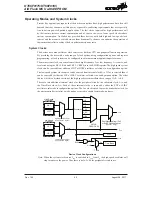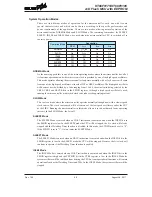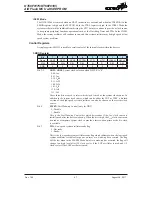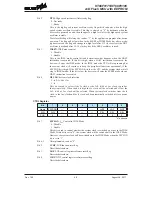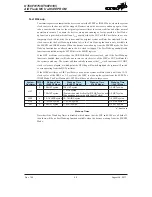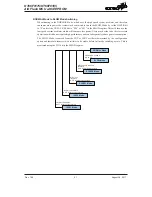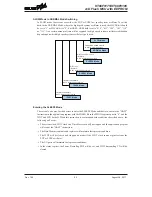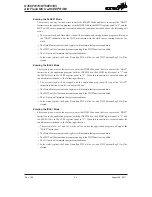
Rev. 1.50
5�
����st ��� �01�
Rev. 1.50
53
����st ��� �01�
HT66F0175/HT66F0185
A/D Flash MCU with EEPROM
HT66F0175/HT66F0185
A/D Flash MCU with EEPROM
SLOW Mode to NORMAL Mode Switching
In SLOW mode the system uses either the LXT or LIRC low speed system oscillator. To switch
back to the NARMAL Mode, where the high speed system oscillator is used, the HLCLK bit should
be set to “1” or HLCLK bit is “0”, but CKS2~CKS0 field is set to “010”, “011”, “100”, “101”, “110”
or “111”. As a certain amount of time will be required for high speed system oscillator stabilization
depends upon which high speed system oscillator type is used.
NORMAL Mode
SLOW Mode
CKS2~CKS0
≠
000B or 001B
as HLCLK = 0 or HLCLK = 1
SLEEP0 Mode
IDLEN=0
HALT instruction is executed
SLEEP1 Mode
IDLE0 Mode
IDLE1 Mode
WDT and LVD are all off
IDLEN=0
HALT instruction is executed
WDT is on
IDLEN=1, FSYSON=0
HALT instruction is executed
IDLEN=1, FSYSON=1
HALT instruction is executed
Entering the SLEEP0 Mode
There is only one way for the devices to enter the SLEEP0 Mode and that is to execute the “HALT”
instruction in the application program with the IDLEN bit in the SMOD register equal to “0” and the
WDT and LVD both off. When this instruction is executed under the conditions described above, the
following will occur:
• The system clock, WDT clock and Time Base clock will be stopped and the application program
will stop at the "HALT" instruction.
• The Data Memory contents and registers will maintain their present condition.
• The WDT will be cleared and stopped no matter if the WDT clock source orginates from the
LXT or LIRC oscillator.
• The I/O ports will maintain their present conditions.
• In the status register, the Power Down flag PDF will be set, and WDT timeout flag TO will be
cleared.








